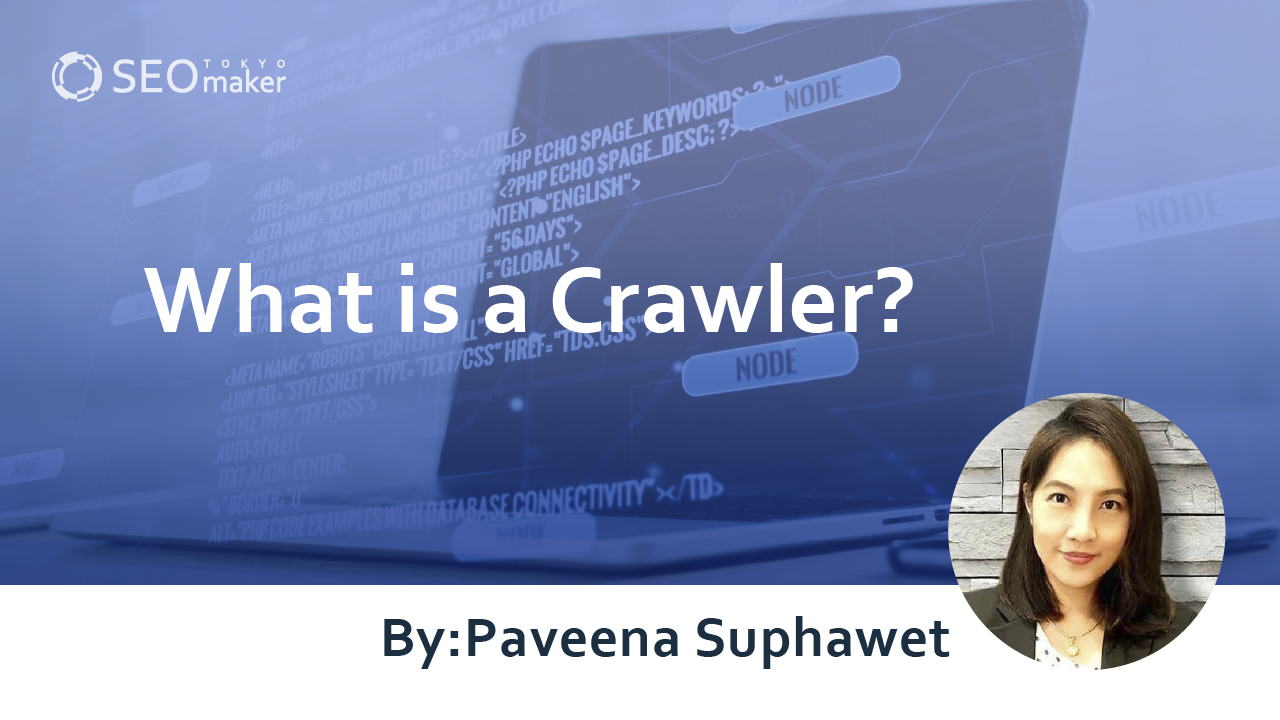What is a Crawler? Explaining the Mechanism and How to Achieve High SEO Rankings
contents
- 1 Search Engine Related Articles
- 2 How Crawlers Work
- 3 How to Achieve High Rankings Through Crawler Visits
- 3.1 Submit an Index Registration Request via Google Search Console
- 3.2 Submit a Sitemap
- 3.3 Increase Domain Power
- 3.4 Publish High-Quality Content
- 3.5 Acquire Backlinks
- 3.6 Emphasize E-A-T
- 3.7 Make Your Site Mobile-Friendly
- 3.8 Improve Page Loading Speed
- 3.9 Beware of Deceiving Crawlers
- 3.10 Purchasing External Links for a Fee
- 3.11 Hidden Text and Links
- 3.12 Copy Content
- 4 Summary
 If you manage a website, you’ve likely heard the term “crawler” at least once. Understanding crawlers is essential for anyone looking to implement effective SEO strategies, as it directly influences how your site appears in search results.
If you manage a website, you’ve likely heard the term “crawler” at least once. Understanding crawlers is essential for anyone looking to implement effective SEO strategies, as it directly influences how your site appears in search results.
In this article, an SEO consultant will explain the meaning and mechanism of crawlers, as well as how to ensure your site appears at the top of search results. By reading through this article, you will gain a comprehensive understanding of crawlers, so be sure to read until the end.
Search Engine Related Articles
How Google Search Engine Works – What is Google?
What is Google’s Algorithm? – What is a Search Engine?
What is a Crawler?
A crawler is a program designed to register (index) web pages on a site. It automatically detects and scans sites by following web page links, deciding where to place the detected pages in search results.
For example, let’s say you publish an article page on your company’s website. This new page will not immediately appear in internet search results. Instead, the crawler detects the new page through the links within your site, examines its content, and then registers it. Only after the site registration, users will be able to find the newly added article page through search results.
In essence, crawlers are indispensable AI robots that make your published pages visible to search users.
The Need for “Google’s Crawler”
Crawlers are developed and operated by companies that own search engines. As of February 2022, Google holds about 77% of the search engine market share in Japan, making “Google’s crawler” the primary focus of optimization efforts.
Search engines are programs that search for information from internet pages worldwide based on keywords entered into the search box. Companies that operate search engines in Japan own crawlers with names such as
-Google: Googlebot
-Bing: bingbot
Notably, Yahoo! Japan, holding the second-largest market share at approximately 17%, currently uses Google’s search engine. This further emphasizes that “Google’s crawler” is the main focus for SEO within Japan.
Source: Search Engine Market Share Japan (Statcounter Global Stats)
How Crawlers Work
Let’s briefly explain how crawlers work to display newly added pages in search results
-Detecting what pages exist on the web
-Accessing pages to review their content
-Determining where to display the pages in search results
1. Detecting what pages exist on the web
Crawlers detect all pages that exist on the web, primarily through links from pages they have previously visited. This process enables Google to continuously identify newly added pages.
Through such crawler pathways, Google is continuously able to recognize newly added pages.
2. Accessing pages to review their content
Upon detecting a new page, the crawler visits it to read its “text” and “non-text content” (such as images and videos) and analyze the overall visual layout.
3. Deciding Where to Display in Search Results
After analyzing a new page’s visual layout, the crawler decides where to display it in search results. Through this process, pages are indexed after being published.
Pages that clearly convey their content are more likely to be detected by crawlers. Pages that provide the most relevant answers to search queries are more likely to appear higher in search results.
How to Achieve High Rankings Through Crawler Visits
To ensure high rankings in search results through crawler visits, several strategies are necessary. Below are eight measures to make your page more discoverable and understandable to crawlers:
1. Submit an index registration request through Google Search Console
2. Send a sitemap
3. Increase domain power
4. Publish high-quality content
5. Acquire backlinks
6. Focus on E-A-T
7. Make the site mobile-friendly
8. Improve page loading speed
Submit an Index Registration Request via Google Search Console
One method to facilitate crawler visits to your site is to prompt an index registration on your end. This can be done through Google Search Console’s “URL Inspection” tool. For newly added content, use Google Search Console to request index registration.
- Select “URL Inspection” in Google Search Console.
- If the page isn’t already indexed, choose “Request indexing.”
Following these steps allows you to request Google to index individual pages that have been added to your site.
Submit a Sitemap
While Google Search Console provides a way to request indexing for individual pages, to inform Google at once about multiple new pages, submit a “sitemap” through the same tool.
A sitemap is akin to a map that outlines the entire structure of your site. Google’s crawlers read this sitemap to efficiently crawl the site (The process of crawlers traversing).
Among various sitemap options, creating an ‘XML sitemap’ for search engines is the most fundamental approach. Recommended methods for creating an XML sitemap include ‘using a free XML sitemap tool’ or ‘using a plugin (for WordPress)’.
Free XML sitemap tools, like “sitemap.xml Editor,” allow you to create a sitemap. After creation, upload the XML sitemap to your server using FTP software and submit its URL via Google Search Console.
If your site is operated on WordPress, you can use the “XML Sitemaps” plugin, which automatically generates and submits your XML sitemap, eliminating the need for manual operation. Companies operating sites on WordPress should definitely consider using this plugin.
Increase Domain Power
Domain power refers to how much a site is trusted by search engines, essentially indicating the site’s strength. Domain power is crucial for crawler visits as it significantly affects your site’s overall evaluation and its ranking in search results.
Sites with higher domain power are prioritized for crawling and are more likely to rank higher. The following sections will detail methods to increase your domain power, but remember, domain power is vital for crawler visits.
Publish High-Quality Content
Publishing high-quality content is key to increasing domain power. Google advises concentrating on high-quality content, a concept that site operators must understand.
What, then, constitutes high-quality content? Some characteristics include;
- Providing optimal answers to users’ questions, problems, and concerns
- Content based on expertise, which earns user trust
- Originality, such as articles based on interviews or uniquely gathered data
Remember, the ultimate goal of SEO is to acquire customers from content, leading to purchases and repeat business. Start by focusing on creating high-quality articles.
Acquire Backlinks
Backlinks are links from external sites to your own. Google highly values these when evaluating a site. Thus, increasing the number of site backlinks is essential for making your page more likely to rank higher due to crawler visits (though mindlessly increasing backlinks is not advised. To be explained later.).
Google assesses sites based on the number of backlinks and links from strong domains or reputable sources. Increasing backlinks can raise your domain power and create a site that’s easier to crawl.
To acquire backlinks, consider the following.
- Create content that resonates and is shareable
- Publishing data researched in-house and getting cited can help in gathering backlinks.
- Produce interview articles and get linked from the interviewee’s site, etc.
Related Article: SEO Off-Page Strategies – What are Backlinks? Explaining the Effects of Backlinks and Methods to Acquire Them.
Emphasize E-A-T
Recent SEO trends include a focus on E-A-T, which can enhance Google’s evaluation of your site. E-A-T stands for
-Expertise
-Authoritativeness
-Trustworthiness
In other words, E-A-T represents an indicator of how much a site is trusted by users. To demonstrate E-A-T, consider focusing on the following points.
- Creating an “About Us” page
- Including author information on content pages, preferably from authoritative figures
- Operating a site that leverages your company’s expertise, like a medical site run by a hospital
Google values not just content but also information indicating the site’s reliability, such as company details and author info. Develop your site with content and these additional elements in mind.
Related Article: What is E-A-T, Emphasized in SEO Strategies!? An In-depth Explanation of Evaluation Criteria and Methods to Address E-A-T
Make Your Site Mobile-Friendly
Google recommends making sites mobile-friendly to improve crawlability. Sites that are easily accessible on smartphones and tablets are more likely to appear higher in search results.
According to a study by SISTRIX, 64% of users search websites using mobile phones, including smartphones. With the ongoing shift towards mobile, it’s essential for site operators to ensure their sites are mobile-compatible.
For mobile-friendliness, adopt a responsive design, which adjusts the site layout for PCs, tablets, and smartphones using a single URL.
Improve Page Loading Speed
Google also emphasizes page loading speed, suggesting that faster pages are more likely to rank higher.
Related Article: Methods for Measuring Page Speed and Strategies for Improving Page Load Speed/Page Speed Insight
Beware of Deceiving Crawlers
Past tactics aimed at deceiving crawlers can result in penalties from Google. Avoid black hat SEO methods as these can lead to your site not being displayed in search results.
– Purchasing External Links for a Fee
-Using hidden texts or links
-Publishing copied content,
Purchasing External Links for a Fee
According to Google’s guidelines, you should not purchase external links for a fee to acquire backlinks. Google infiltrates sites that create links using tools for a fee, making it apparent that these external links are being manipulated.
Hidden Text and Links
Hidden text and links designed to manipulate rankings are also subject to penalties. ‘Hidden text’ refers to methods such as using text the same color as the background or placing text behind an image to conceal it. ‘Hidden links’ involve disguising a link as a single small character (such as a hyphen).
Engaging in such practices will result in penalties, so please refrain from doing so.
Copy Content
Content that has been copied without permission from other sites is considered ‘copy content’ and is less likely to appear at the top of search results. Copying content from other sites without permission is a copyright infringement, and may lead to claims for damages, so please avoid doing this.
Summary
Crawlers are AI robots that detect newly added internet pages to index them on a site. Most of the search engines used domestically are owned by Google. Therefore, please take measures against Google’s crawlers. To improve crawlability, methods such as ‘submitting an XML sitemap’ and ‘publishing high-quality content’ are available. Based on the content explained in this article, we encourage you to aim for a higher page ranking.









![What is a Description? Explaining the Meaning, Writing Style, and Changing Word Count – [2023 Edition]](https://www.switchitmaker2.com/en/wp-content/uploads/2024/09/what-is-description.webp)










